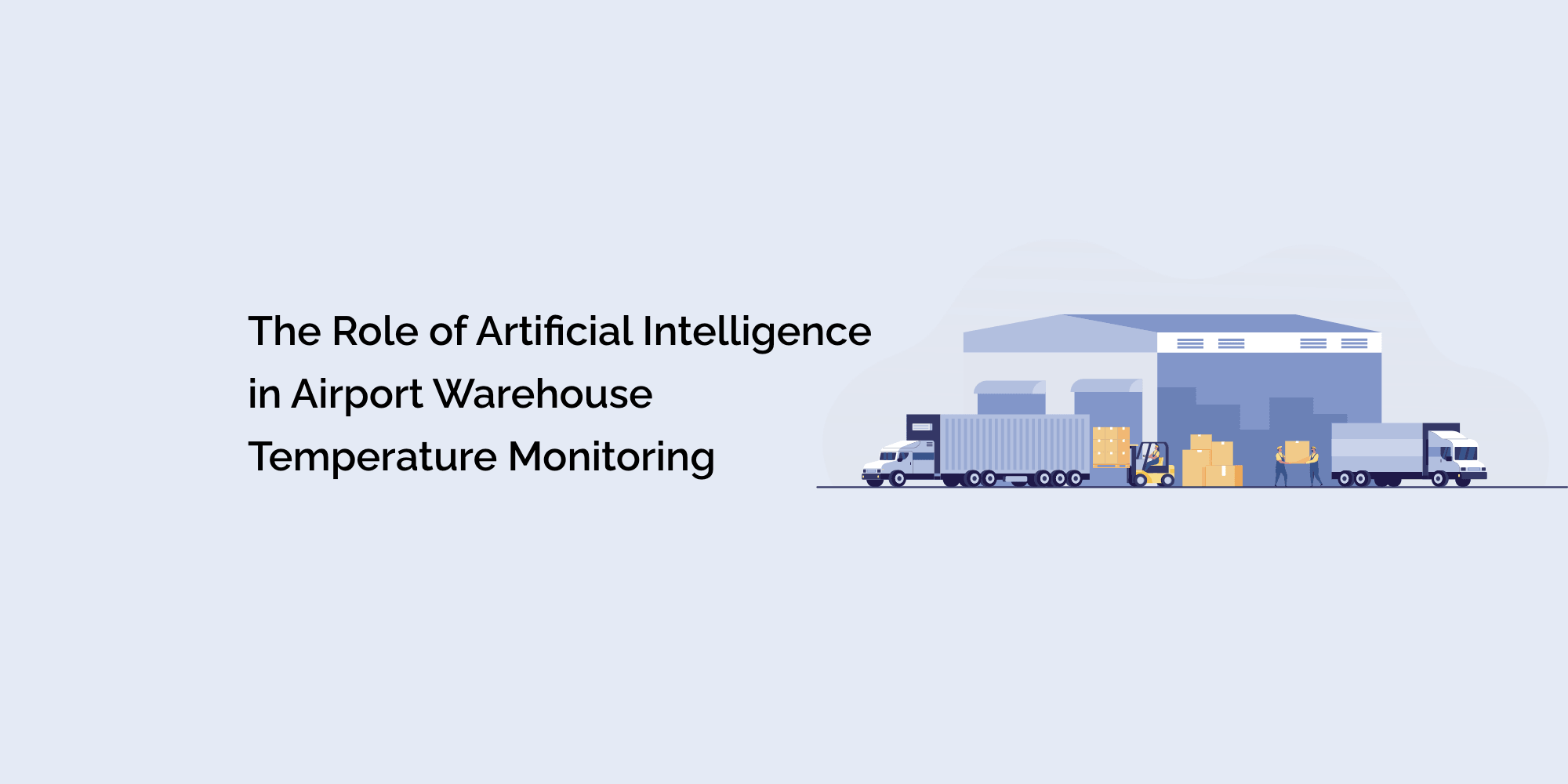Airports are vital hubs that facilitate the smooth flow of goods and passengers around the globe. Behind the scenes, airport warehouses play a critical role in handling and storing various commodities, including temperature-sensitive items like pharmaceuticals, fresh produce, and perishable goods.
Maintaining optimal temperature conditions in these warehouses is crucial to preserving product quality and complying with regulatory standards. In recent years, the integration of Artificial Intelligence (AI) has revolutionized temperature monitoring, enhancing efficiency, accuracy, and overall performance.
This comprehensive blog explores the pivotal role of Artificial Intelligence in airport warehouse temperature monitoring.
-
Understanding the Significance of Temperature Monitoring in Airport Warehouses
Airport warehouses serve as essential links in the supply chain, connecting suppliers, airlines, and consumers. Ensuring the right temperature for stored goods is critical to prevent spoilage, maintain product integrity, and meet stringent safety regulations.
Traditional temperature monitoring methods, such as manual checks or periodic data logging, are time-consuming and lack real-time insights. AI-driven solutions offer a paradigm shift, providing continuous monitoring and intelligent analysis of temperature data.
-
The Rise of Artificial Intelligence in Airport Logistics
Artificial Intelligence is a branch of computer science that empowers machines to imitate human-like intelligence, learn from data, and make autonomous decisions. In the realm of airport logistics, AI has been leveraged to optimize various processes, including baggage handling, security screening, and now temperature monitoring. AI's ability to process vast amounts of data quickly makes it an ideal tool for real-time temperature monitoring and predictive analysis.
-
AI-Enabled Smart Sensors for Real-time Temperature Monitoring
At the core of AI-driven temperature monitoring are smart sensors. These cutting-edge devices are strategically placed within airport warehouses and cargo containers to continuously collect temperature data.
AI-enabled sensors can detect even the slightest fluctuations, offering real-time insights into temperature conditions. The seamless integration of AI with these sensors allows for automated analysis and decision-making.
-
Machine Learning Algorithms for Predictive Insights
Machine Learning, a subset of AI, enables algorithms to learn from data and improve their performance over time. In airport warehouse temperature monitoring, machine learning algorithms can analyze historical temperature data to identify patterns and predict potential temperature deviations.
These predictive insights empower warehouse managers to proactively take preventive measures and minimize the risk of spoilage or damage to goods.
-
Enhanced Accuracy and Efficiency in Temperature Control
AI's ability to continuously monitor temperature conditions and analyze data in real-time ensures accurate and timely responses. When temperature thresholds are breached, AI systems can trigger immediate alerts to relevant personnel, enabling swift interventions. The precision and efficiency offered by AI contribute to reduced product losses and enhanced operational reliability in airport warehouses.
-
Optimization of Warehouse Layout and Resource Allocation
AI's data analytics capabilities extend beyond real-time monitoring. By analyzing temperature data over time, AI can identify areas of the warehouse that may experience temperature fluctuations. This information can help optimize warehouse layout, ensuring proper temperature distribution and storage allocation for different commodities.
Additionally, AI can optimize resource allocation, such as energy usage, based on historical temperature patterns and demand fluctuations.
-
Integration with Warehouse Management Systems
AI-powered temperature monitoring systems seamlessly integrate with existing warehouse management systems (WMS). This integration streamlines data recording, reporting, and analysis, making it easier for warehouse managers to track and manage temperature-sensitive goods. The seamless flow of information between AI systems and WMS enhances the overall efficiency of warehouse operations.
-
AI for Energy Management and Sustainability
Temperature monitoring is not only critical for product preservation but also for energy management. AI can be utilized to optimize heating, ventilation, and air conditioning (HVAC) systems in airport warehouses, reducing energy consumption while maintaining optimal temperature conditions. This sustainability aspect aligns with the global drive towards more eco-friendly operations.
-
Addressing Security and Privacy Concerns
As with any technology, AI implementation in airport warehouse temperature monitoring raises security and privacy concerns. Protecting sensitive temperature data from potential breaches and ensuring data compliance are essential considerations.
Implementing robust security measures and adhering to data protection regulations are crucial to maintain the integrity of AI-driven temperature monitoring systems.
Conclusion
The integration of Artificial Intelligence in airport warehouse temperature monitoring marks a transformative milestone in the aviation industry. The capability of AI to provide real-time insights, predictive analysis, and seamless integration with existing systems enhances the efficiency and reliability of temperature control in airport warehouses.
With AI-driven smart sensors, machine learning algorithms, and advanced data analytics, airports can ensure the preservation of temperature-sensitive goods, optimize resource allocation, and contribute to sustainable operations.
Embracing AI is not just a technological advancement; it is a strategic investment in the future of airport logistics, where efficiency, accuracy, and sustainability converge.








